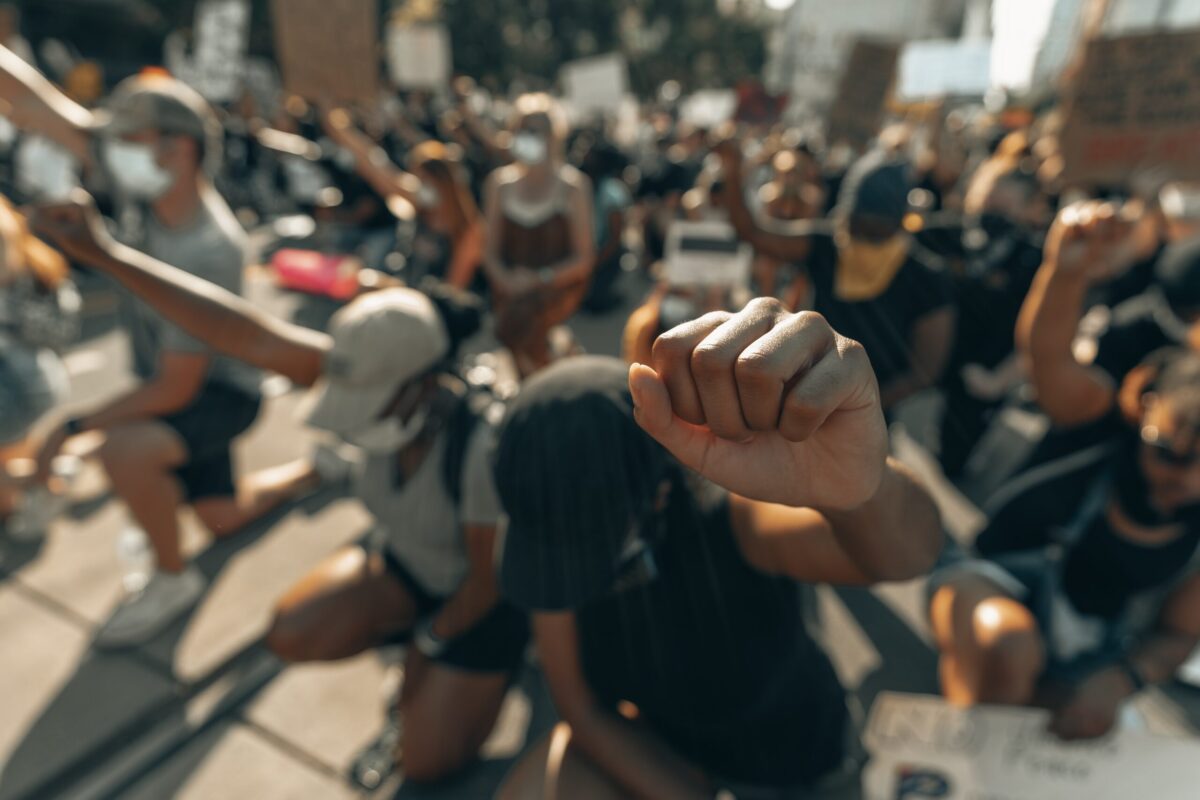How can we reckon with a racial past if we don’t know it?
At a Mon., November 27 Ethnic Media Services Briefing, leaders from the Smithsonian Institution and three cultural centers in Los Angeles — where the Smithsonian is launching its national initiative, Our Shared Future: Reckoning With Our Racial Past — discussed how past racism relates to present racial inequality.
National experiences of race, racism
Dr. Deborah Mack, director of the Smithsonian’s Our Shared Future, said the initiative came about to address the history of racism and its present legacy in the U.S. after the murder of George Floyd and subsequent nationwide protest movements. “The United States is, more than at any other time in its history, a globalized society, and many of the concepts of race that are portrayed in mainstream media have often limited application to the communities they’re intended to represent.”
Given the city’s diversity, she saw Los Angeles as “one of the strongest places to express the full breadth of histories of racism as an American national experience,” and so the Smithsonian worked with three cultural institutions that have long focused on that work in marginalized communities: LA Plaza de Cultura y Artes, the Chinese American Museum and the Japanese American National Museum.
Although even reflecting on the racial past “poses political challenges in many parts of the country, we don’t see reticence nearly as much as we expected,” Mack said. “We’ve particularly seen a lot of response from educators who have been punished for raising these issues, who use our work to say, ‘If the Smithsonian is doing this work, why shouldn’t we?’ … If we don’t talk about our history of inequity, we won’t be able to move forward from it.”
The role of museums in reckoning with the racial past
Far from being limited to preserving this past, the role of museums is to “spotlight where we’re now moving as a culture through the history of our communities,” said Leticia Buckley, CEO of LA Plaza de Cultura y Artes. “We don’t just collect artwork, we collect stories, because it’s important that they are told by us and not for us. The past isn’t just 100 years ago — it’s last year, last month, last week.”
“Since we’re working within systems that were not meant for us to be working within,” she continued, “it’s not just about dismantling the systems itself, but creating our own. You can’t address racism without difficulty; that’s why it continues and is perpetuated … it’s hard, but we can’t move forward unless we reconcile ourselves to the past.”
Alongside more traditional museum exhibitions, this reconciliation takes the form of “music, dance, culinary demonstrations, multigenerational art making, and in-person storytelling,” highlighting the experiences of LA Mexican Americans — most recently the East LA student walkouts of 1968, the National Chicano Moratorium Against the Vietnam War, and the experiences of Afro-Latinos, Buckley explained.
“These stories are filled with trauma and defeat, but also joy and success,” she added. “We look at the past to address the harms that our communities have endured, but also to reckon with the harms that we may be guilty of inflicting.”
Racial stories as American stories
In telling these stories, museums must be a place “where we unite rather than divide people … by telling these racial stories as part of a broader American experience of U.S. history,” said Michael Truong, executive director of the Chinese American Museum. “Chinese Americans are not only part of a larger community of Asian Americans, but also of Americans in general.”
The need to tell these stories is as pressing as ever given rises in Asian hate over the past few years, but extends throughout a century and a half “of forgotten history of Chinese Americans in LA’s Chinatown,” he continued.
One such undertold history recently highlighted by the Museum is the LA Chinese Massacre of 1871, an act of mob brutality among 500 white and Latino Americans who killed 19 Chinese immigrants — over 10% of the LA Chinese population at the time.
“How do we reckon with our racial past and heal from our racist past, if we don’t even know the history, if we don’t know what to heal? Our work is not just to remember the past, but to make sure we’re learning from it,” Truong explained.
Contemporizing the past
James Herr, director of the National Center for the Preservation of Democracy at the Japanese American National Museum (JaNM), said the 20 years since the center’s founding has affirmed the need for its aim. “When you’re telling the truth about America’s racial past, it can often bring up feelings of hatred and resentment and bitterness towards those in power, so we want to tell and share these stories to avoid reliving the past.”
Even the museum’s location speaks to the way this past is contemporized and these lessons relearned, he continued, as JaNM was “founded in what is now the first Buddhist temple in LA … It’s also on a plaza that used to be Central Avenue at First Street, which is where Japanese Americans in LA were ordered to report before being incarcerated in internment camps.”
These issues of racially marginalized American citizens “stripped of their rights and due process” continue to arise so long as they are “denied the right to write their own history,” Herr said. For example, “after 9/11 there were public calls for the incarceration of Muslim Americans,” and more recently in 2017 “there was the Muslim travel ban, against which we were among the first organizations to speak out.”
“When our communities have been marginalized in the past, that marginalization leads to them not wanting to come together and have these conversations about it in the present, and that compounds the issue,” he added. “If we contemporize that racial past” by seeing how it affects us today, “we see ourselves for who we are — Americans.”
Image via Unsplash




